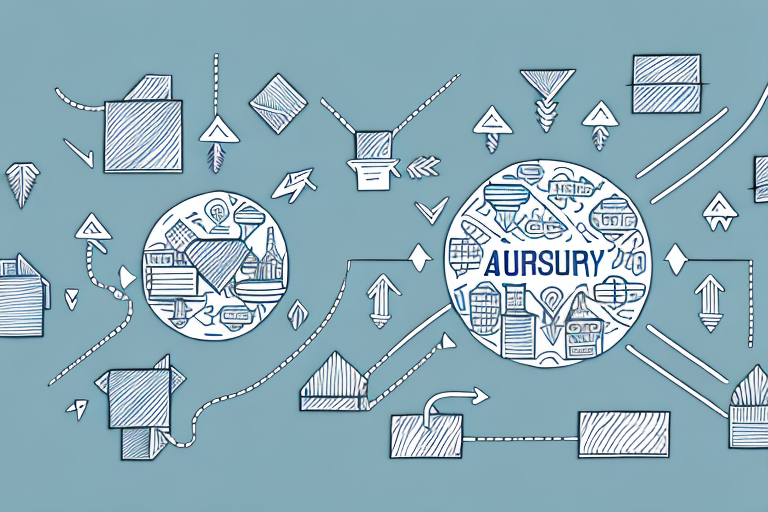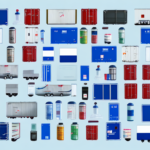The Importance of the Common Health Entry Document (CHED) in Healthcare Supply Chains
The Common Health Entry Document, commonly referred to as CHED, is an essential component in healthcare logistics. This standard form is required by numerous countries worldwide for the importation of medical products and devices. The primary purpose of the CHED is to ensure compliance with international regulatory requirements, guaranteeing that medical products meet established quality and safety standards.
Understanding CHED and Its Role in Supply Chain Management
What is CHED?
CHED is a comprehensive document that provides detailed information about each medical product or device being imported. It includes data such as the product name, manufacturer details, intended use, and specific regulatory requirements. This document is a critical part of the supply chain management process in healthcare logistics, enabling regulators to monitor the movement of medical products across international borders.
Importance in Supply Chain Management
CHED facilitates the seamless movement of medical products and devices globally by ensuring that imports comply with the respective country's regulatory standards. This not only upholds the quality and safety of medical products but also aids in preventing the entry of counterfeit or substandard products. By verifying the authenticity and quality of imports, CHED plays a pivotal role in safeguarding patient health.
Supporting Timely Deliveries
Accurate CHED documentation expedites the customs clearance process, reducing delays and ensuring that medical products reach healthcare facilities promptly. This timely delivery is crucial for maintaining the availability of essential medical supplies, thereby supporting patient care and treatment outcomes.
Benefits of Utilizing CHED in Healthcare Logistics
Simplified Importation Process
CHED streamlines the importation process, making it easier for manufacturers to supply products to diverse markets. A standardized documentation system reduces the complexity involved in navigating varying regulatory landscapes across different countries.
Regulatory Compliance and Risk Mitigation
By ensuring that imported products meet necessary regulatory requirements, CHED minimizes the risk of rejected shipments. Compliance with regulatory standards also helps maintain high quality and safety standards, protecting patient health and preventing the circulation of counterfeit medications.
Enhanced Supply Chain Visibility
CHED improves supply chain transparency by providing a standardized system for tracking and monitoring medical products. This visibility allows for the early identification of potential issues or delays, enabling timely interventions and enhancing overall supply chain efficiency.
Streamlining Customs Clearance with CHED
Comprehensive Information Provision
CHED centralizes all necessary information required for customs clearance, allowing officials to swiftly verify that imported products adhere to regulatory standards. This comprehensive documentation reduces clearance times and the likelihood of delays, ensuring that medical products reach their destinations without unnecessary holdups.
Guidance and Support for Manufacturers
CHED provides valuable guidance to manufacturers and distributors, detailing requirements such as labeling standards, product classification, and necessary documentation. This support ensures that products meet regulatory standards, facilitating smoother customs processes and market entry.
Ensuring Quality Control and Regulatory Compliance with CHED
Standardized Quality Assurance
CHED offers a standardized format for manufacturers to present all pertinent product information, ensuring that importers can easily verify compliance with regulatory requirements. This standardization guarantees that healthcare organizations can trust the safety and quality of imported medical products.
Supply Chain Monitoring and Tracking
CHED plays a vital role in tracking the movement of medical products throughout the supply chain, from manufacturers to importers and ultimately to healthcare facilities. This monitoring ensures that products are stored and transported under appropriate conditions, maintaining their integrity and efficacy.
Types of CHEDs for Medical Products and Devices
Regional Variations of CHED
Different countries may require specific types of CHEDs tailored to their regulatory frameworks. Notable examples include:
- EU Common Health Entry Document: Required for all medical products entering the European Union, ensuring compliance with EU safety and quality standards. Learn more.
- FDA Prior Notice: Mandatory for medical product imports into the United States, verifying compliance with FDA safety and quality standards. FDA Official Site.
- Health Canada Customs Entry Document: Necessary for imports into Canada, aligning with Canadian health regulations. Health Canada.
Guidelines for Properly Filling Out and Submitting a CHED
Accurate Information Submission
Manufacturers must ensure that all required information, such as product name, manufacturer details, and intended use, is accurately provided in the CHED. Importers should meticulously review the completed CHED to confirm the accuracy and completeness of the information before submission.
Additional Documentation and Permits
Certain medical goods may necessitate supplementary documentation, such as Certificates of Analysis or Certificates of Free Sale. Importers are responsible for obtaining and submitting these documents alongside the CHED to avoid delays or rejection of shipments. Collaboration with regulatory authorities or customs brokers can facilitate a smooth importation process.
Overcoming Common Challenges with CHED
Addressing Document Complexity
One significant challenge with CHED is its complexity, which can lead to errors and delays. To mitigate this, manufacturers and importers should familiarize themselves with CHED requirements and consider professional assistance when necessary.
Navigating Country-Specific Requirements
Variations in CHED requirements across different countries can complicate the importation process. Thorough research and collaboration with experienced customs brokers can help businesses effectively navigate these differences.
Staying Updated with Regulatory Changes
Regulatory requirements and CHED formats may evolve, necessitating continuous updates to importation processes. Regular reviews of procedures and maintaining open communication with customs authorities can ensure ongoing compliance.
Best Practices for Implementing CHED in Healthcare Supply Chains
Stakeholder Awareness and Training
Ensuring that all stakeholders, including manufacturers, importers, customs officials, and healthcare organizations, are aware of CHED requirements and benefits is crucial. Comprehensive training programs for employees involved in the importation process can enhance compliance and efficiency.
Establishing Clear Communication Channels
Effective communication among all parties in the supply chain is essential. Regular updates on shipment statuses and potential issues can prevent misunderstandings and facilitate prompt resolution of problems.
Conducting Regular Audits
Routine audits of the supply chain can identify compliance gaps and areas for improvement, ensuring that CHED requirements are consistently met and enhancing overall supply chain performance.
Future Developments in CHED Technology and Global Health Trade
Digital and Electronic CHEDs
The future of CHED technology is expected to involve greater adoption of digital and electronic formats, streamlining the importation process for medical products and devices. Electronic CHEDs will enable real-time monitoring of product movements, reducing the risk of counterfeiting and enhancing regulatory compliance.
Blockchain Integration for Enhanced Security
Integrating blockchain technology with CHEDs could revolutionize supply chain transparency and security. Blockchain provides an immutable record of every transaction, from manufacturer to end-user, preventing fraud and improving traceability in the event of product recalls. This advancement would significantly bolster global health trade by ensuring the safety and authenticity of medical products.
In conclusion, the Common Health Entry Document (CHED) is a fundamental document in healthcare logistics, vital for ensuring quality control and regulatory compliance of medical products and devices. By streamlining customs clearance and simplifying the importation process, CHED protects patient health and maintains high standards of quality and safety. Advancements in CHED technology, such as digital formats and blockchain integration, promise to further enhance supply chain management, making the global distribution of medical products more efficient and reliable.




















